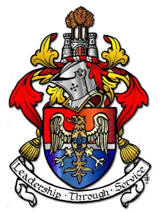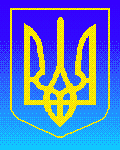| Royal Ancestors from Kievan Rus |
|
|
Royal Ancestors from Kievan Rus INTRODUCTION The formative centuries of the Russian state are perhaps best divided into three main periods; the era of Kievan Rus from its roots in the ninth century to the Mongol invasion of 1237-1240; a century of Mongol dominance from 1240 to c. 1340, during which Kievan traditions and structures lost their potency and the Rus principalities adapted to Mongol or Tatar suzerainty; and the period from c. 1340 to the mid-fifteenth century, when the foundations of the new state of Muscovy were laid. The lands that made up Kievan Rus were located in the forst region of Eastern Europe along a group of rivers, the Dnieper, the western Dvina, the Lovat Volkhov, and the Volga, the headwaters of which all emanate from the Valdai hills. They were populated mainly by Slavic and Finnic tribes. The members of those tribes supported themselves, to some degree, by fishing, hunting, and gathering fruits, berries, nuts, mushrooms, honey, and other natural products in the forest around their villages. But the Slavs were primarily agriculturalists. In natural forests clearings or in those they created by the slash-and-burn method, they typically cultivated one or more cereal grains and also raised livestock as well as supplementary crops such as peas, lentils, flax or hemp. Although each tribe followed its own leaders and worshiped its own set of gods, they interacted with one another, at times exchanging goods, at others fighting one another. The more adventurous among their members transported the valuable goods their societies produced to the markets of distant neighbors – Bulgar on the mid-Volga, the Khazar capital of Itil at the base of the Volga, and the Byzantine outpost of Kherson on the coast of the Cromean peninsula. There they exchanged their goods for oriental finery and, most conspicuously, silver coin. The transformation of these tribes into the state of Kievan Rus is shrouded in uncertainty. Legends and literature recorded much later, archeological evidence, and the notations of foreign observers, however, suggest that by the early ninth century Scandinavian adventurers (known variously as ‘Varangians’ and ‘Rus”) had entered the Slav lands. Primarily attracted by the silver at the Volga market centers, they plundered Slav villages and carried their booty to the same markets that the Slavs themselves had visited. In the course of the ninth century the Varagians protected its own group of Slavs from competing Scandinavian pirates in exchange for regular tribute payments. Those stable relationships were mutually beneficial. The Slavs were relieved of the sporadic, violent raids, while the armed Rus bands received regular supplies of goods used in their exchanges for silver and oriental luxury products. Gradually, the Rus leaders acquired the character of princes, and the Slav populace became their subjects. According to a legend in the Primary Chronicle compiled during the eleventh and early twelfth centuries, one of the first Rus princes was called Rurik. The legend states that Rurik and his brothers were “invited” by Slav tribes to rule their lands. Tribes that dwelled in the general vicinity of the Lovat and Volkhov rivers and the lands to their east had ejected previous Scandinavian protectors, but then became embroiled in warfare among themselves. Unable to reconcile their differences, the chronicler explained, they called upon Rurik in 862 to restore peace and rule over them. Rurik, the legends continue, survived his two brothers to become sole ruler until his own death in 879 or 882. A regent, Oleg, then ruled on behalf of Rurik’s young son Igor. After Oleg’s death in 912, Igor ruled until 945; a tribe called the Drevliane killed him after he attempted to collect more than its standard tribute payment. Igor’s wife, Olga, assumed the regency and took cunning revenge upon her husband’s murderers. Their son, Sviatoslav, claimed his father’s place in 962. By that time the realm of the Rurikid clan had expanded substantially. According to the chronicle, the tribes subject to the Rurikids had increased to include Krivichi, the Poliane, and the Drevliane. The Rurikids, furthermore, had taken command of the Dnieper, a major commercial artery. From the vantage-point of Kiev they could control all traffic moving towards the Black Sea, the Byzantine colony of Kherson, and towards the sea route to the Don river and the Khazar Empire. Oleg in 907 and Igor, less successfully in 944, conducted military campaigns agains Constantinople, which resulted in treaties permitting the Rus to trade not only at Kherson, but at the rich markets of Constantinople itself, where they mingled with merchants and had access to goods from virtually every corner of the known world. Sviatoslav continued to expand is father’s domain. He first subdued the Viatichi, who inhabited lands along the Oka and Volga rivers and had previously paid tribute to the Khazars, and in 965 he launched a campaign against the Khazars themselves. His venture led to the collapse of their empire, subsequently, the destabilization of the lower Volga and the steppe, a region of grasslands south of the Slav territories. Although he did rescue Kiev from the Pechenegs in 968, Sviatoslav devoted most of his attention to establishing control over lands on the Danube river. Forced to abandon the project by the Byzantines, he was returning to Kiev when he was killed by the Pechenegs in 972. Shortly after Sviatoslav’s death his son Iaropolk became prince of Kiev, but conflict erupted between him and his brothers. After one died in battle against him, another, Vladimir, fled from Novgorod, the city he governed, to raise an army in Scandinavia. Upon his return in 980, he first engaged the prince in Polotsk, one of the last non-Rurikid rulers of the East Slav tribes. Victorious, Vladimir married the prince’s daughter and added the prince’s military retinue to his own army, with which he then defeated Iaropolk and seized the throne of Kiev. Vladimir also subjugated the Radimichi, and in 985 attacked the Volga Bulgars; the agreement he subsequently reached with the latter was the basis for peaceful relations that lasted for a century. Over the two centuries following Vladimir’s death in 1015, Kievan Rus became an amalgam of principalities, whose number increased as the dynasty itself grew. The Rurikid dynasty also converted to Christianity and thereby provided it with a uniform religious and cultural framework. Christianity, Judaism, and Islam had long been known in these lands, and Olga had personally converted to Christianity. When Vladimir assumed the throne, however, he set idols of Norse, Slav, Finn, and Iranian gods, worshipped by the disparate elements of his society, on a hilltop in Kiev in an attempt to create a single pantheon for his people. As the Rurikid dynasty and Christian clergy displaced tribal political and spiritual leaders, their political and religious-cultural structures transformed the conglomeration of East Slav tribes into a dynamic and flourishing state. The dynastic system, however, also encouraged co-operation among the princes when they faced crises. Concerted action was prompted particularly by the Polovsty, another population of Turkic nomads that moved into the steppe and displaced the Pechenegs in the second half of the eleventh century. The political organization of the Ruriks also contributed to repeated dynastic conflicts over succession to the throne of Kiev.
Russia
|

